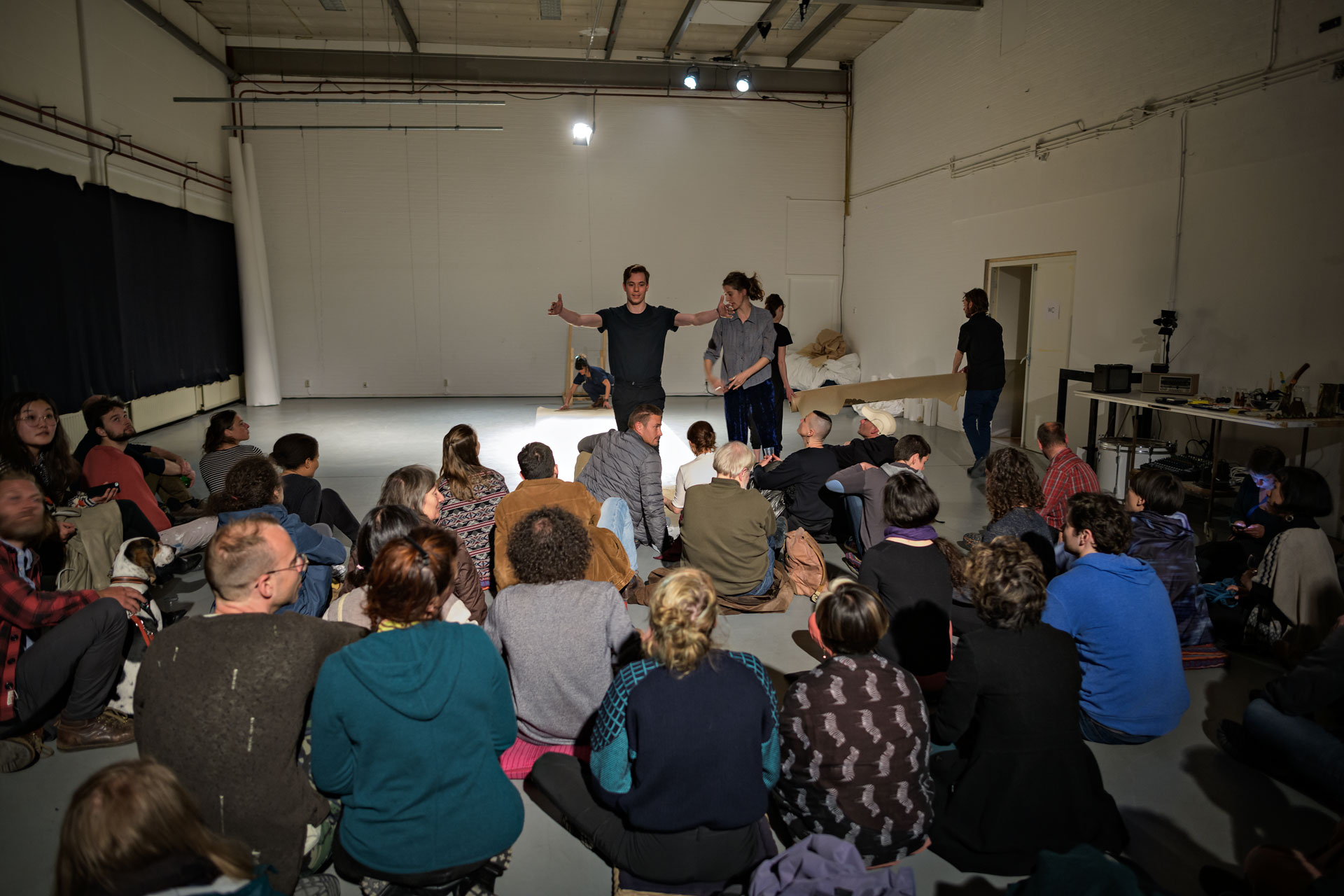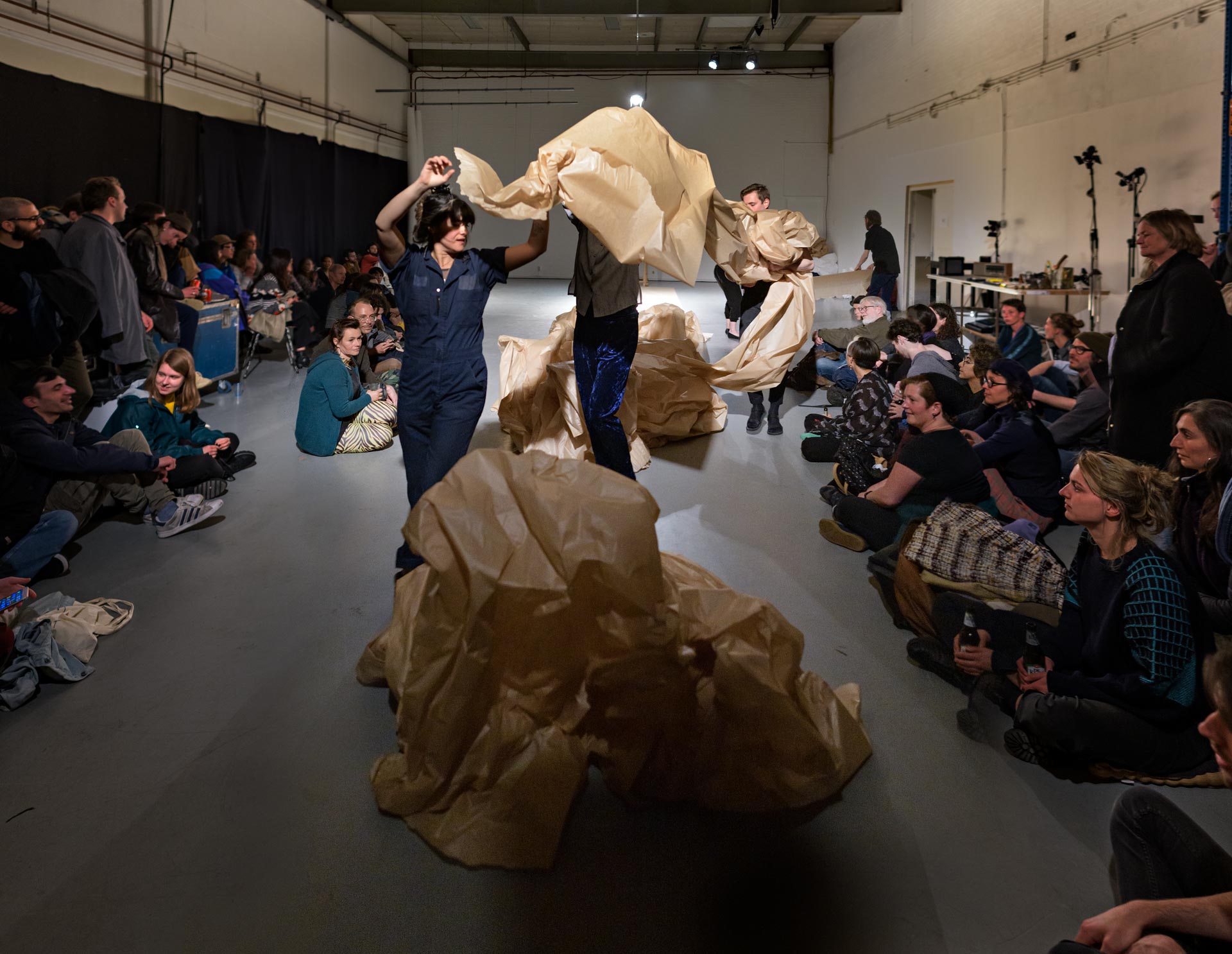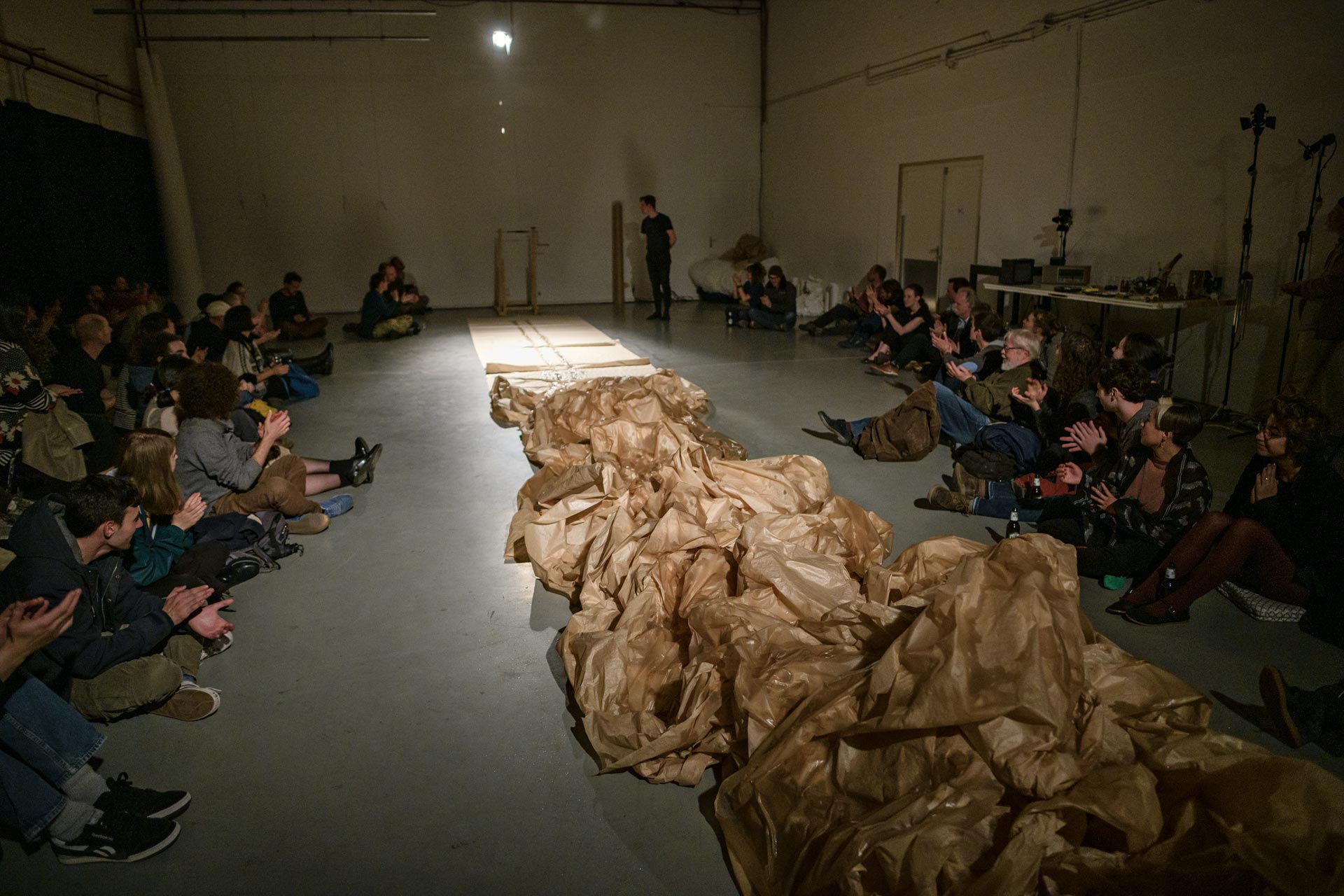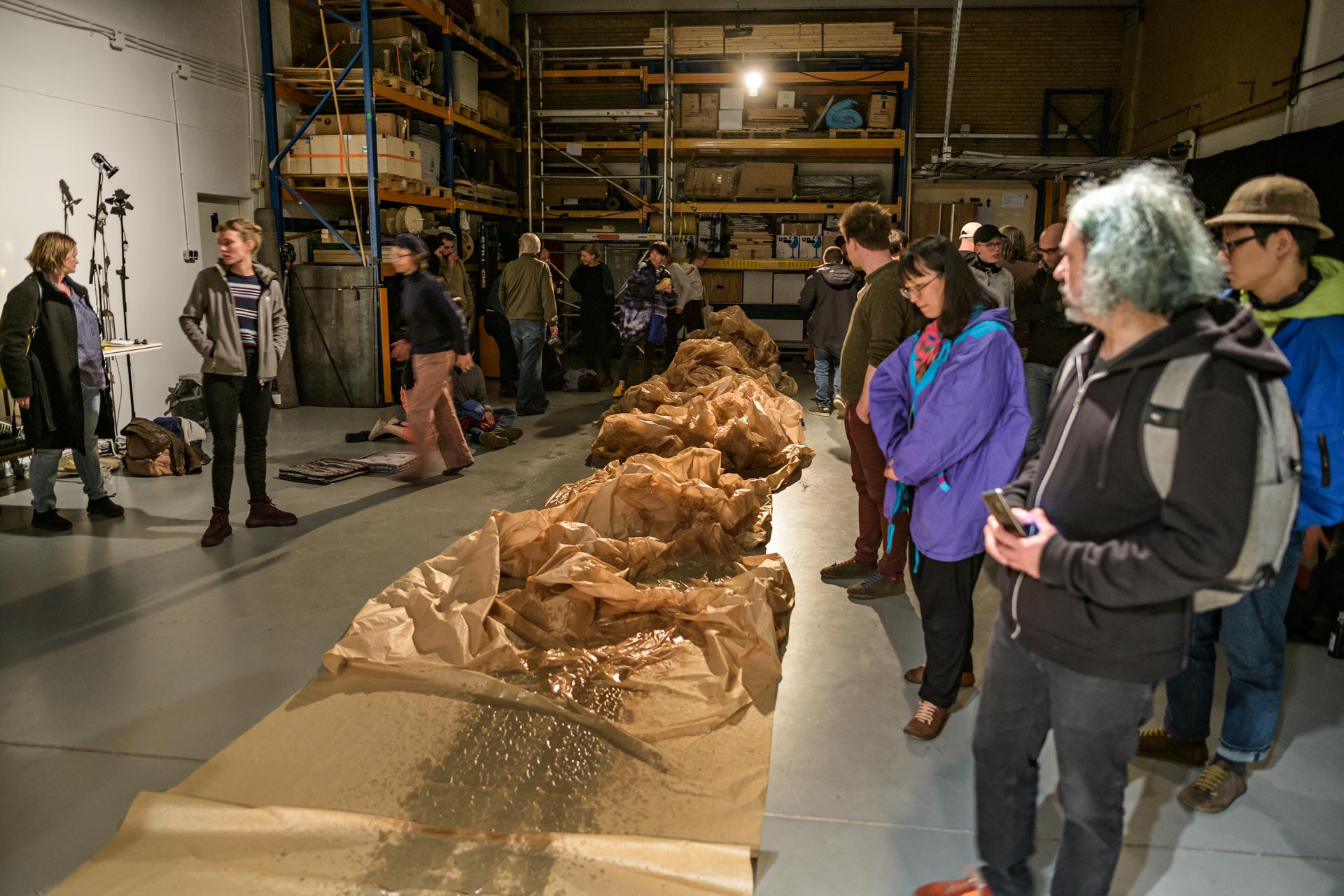Streep 2
From a big roll, sheets of paper are rolled out and teared. The sheet are folded and shaped into the correct form and put into a stripe on the floor. The stripe goes from a wrinkled blob to waves of crackles and smoother valleys until it ends as a flat single sheet. When the composition is formed the lights go out, only a very dim shimmer remains so the landscape laid out on the floor is barely visible. Suddenly water starts dripping at the wrinkled end of the stripe. The paper starts collapsing and decaying. Gradualy the water moves along the paper leaving a trail of wet reflective remains. While the performance progresses the consistend meter wide rainshower slowly dies out. The water now consists of individual drips that fall rhythmically on the paper. Starting at eleven drops, after a while only a few sporadic drops remain. The slightest ripple in the paper makes for a drastic change in the sound. The paper is now flat and only one drop remains, slowly decreasing in tempo. The drop remains in a static position and as its landing zone becomes wetter and wetter, the sound becomes less and less crisp ending in a muffled drip counterd by the diaspora of its splash.





photo’s: Pieter Kiers | Beeld.nu
Streep 2 is an iteration of my ongoing research on the physicalization of computer music. For this work I draw from the concept of the DAW (Digital Audio Workstation), which is the go-to tool for many electronic composers. Within the DAW, audio is represented by blocks that are put onto a timeline.
Streep 2 is the second PAW (Physical Audio Workstation). Like Streep 1 it features paper as object,water as actuator, and dripping as method. The appliance of water on paper is chosen to emphasize the transiency native to the physical realm.